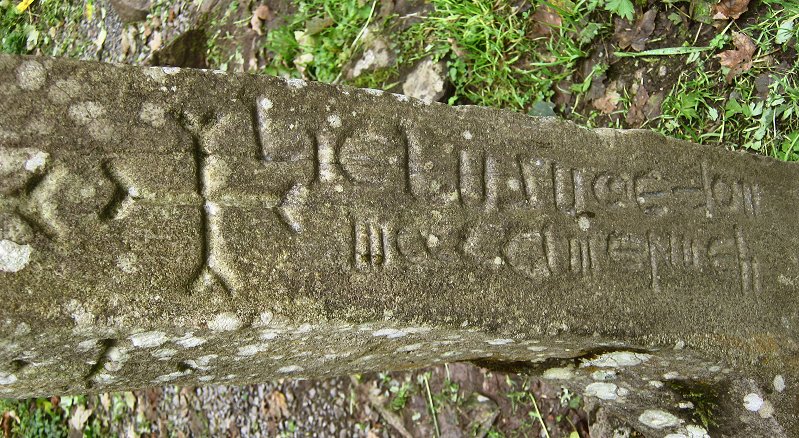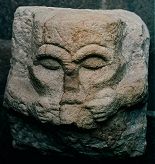IRISH
CROSS-PILLARS
and cross-slabs
part one

text and photographs by
Anthony Weir .
Kilnasaggart, county Armagh: detail of Christianised
pillar-stone
(south side)
For a full view in colour
of the inscription on the north side, click on the image above.
Just as Ogam
inscriptions were added to already-standing stones of considerable
antiquity, so, with the remarkably peaceful Christian penetration
of Ireland, menhirs and sacred boulders attracted Christian appropriation.
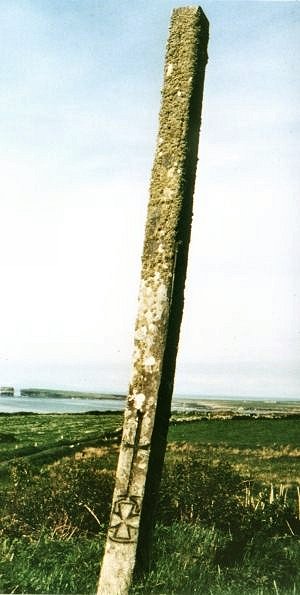
Dunfeeny, county Mayo
Although
the largely-legendary St Patrick is credited with overturning
'idols' all over the island, in the unique and traditional
Christian manner, it may have been just as satisfying in the 6th
century - and much more permanent - to Christianise a 'pagan'
stone as to destroy it. As late as the 19th century 'pagan'
stones removed by priests had a propensity for returning to the
spot.
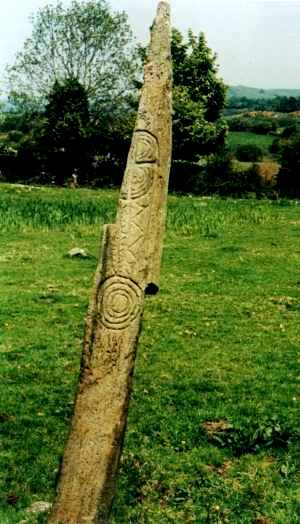
Lankill, county Mayo
Some of
the Christianisations had a distinctly prehistoric look, suggesting
that the Irish church (which was nothing like the modern Catholic
church, but much more like the Coptic and Syrian churches) was
rather more receptive and assimilative than others in Europe.
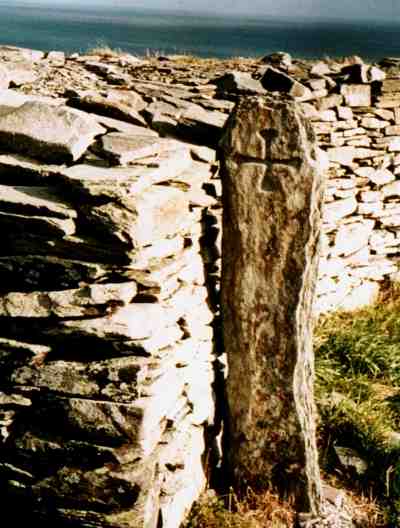
Cross-pillar inside the entrance
to a stone-fortified farmstead,
Knockdrum, county Cork. This type of cross is called a cross-pattée.
By and
large, the inhabitants of Ireland welcomed this tolerant form
of Christianity, with its fantastic redemption, as a relief from
the dark rites and realistic fatalism of Celtic religion.
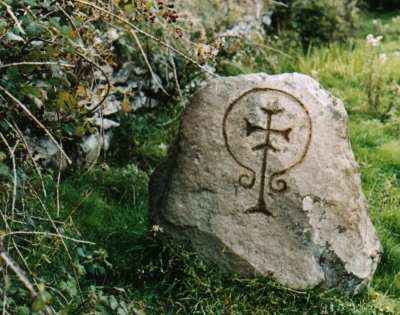
Kilvickadownig, county Kerry:
a design on a boulder
which incorporates an A for Alpha (the foot of the cross-pattée)
and an Omega (W ) forming a curclicued
nimbus around it.
Celts
had holy stones and holy wells and worshipped trees, streams,
groves, glades and genii loci. Irish Christianity seemed
to be able to accommodate all these except the trees - and it
was with the proliferation of wealthy monasteries from the eighth
century onward (and the Norse attack that they attracted) that
the first serious deforestation since Neolithic times occurred.
Ireland, like Scotland, was largely covered with deciduous and
holly-tree forest.
It is now the most-deforested country in Europe.
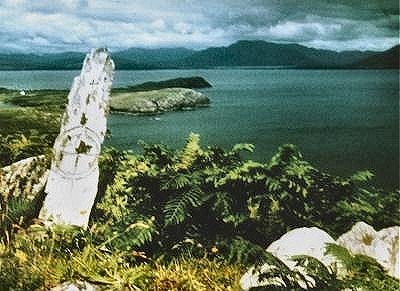
Kildreelig or Killerelig,
county Kerry
Irish Christianity was essentially monastic and almost federal,
whereas Catholicism is episcopal, hierarchical and totalitarian:
"E pluribus unum"! The Irish church had no Rome-appointed
head until St Malachy of Armagh went to Rome in the 12th century
and had himself appointed Archbishop.
While
large monasteries were established on the fat cattle-lands of
the East of Ireland
Sun-dial, Bangor 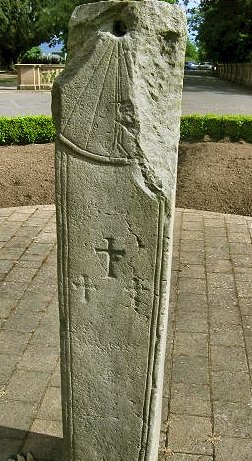 county Down
county Down
and around
the central Bog of Allen which covered a great deal of the interior,
little monasteries were established in remote places, often called
Diseart or Dysart, after the Latin Deserta.
Monks modelled themselves on the early Desert Fathers, amongst
whom the first monks of all, St Paul the Hermit and St Anthony
- and successors such as St
Onuphrios - were models for those few who went off
to solitary spots, often on islands or islets, and subsisted on
seabirds, sea scurvy-grass and shellfish while praising the glory
of God as presented to them by wild and spectacular Nature.
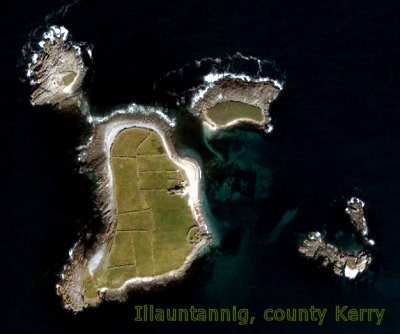
A monastic settlement, containing clochans
or stone huts,
and resembling a promontory fort, on an island off the North shore
of the Dingle Peninsula.
Below: a typical clochan, which would have housed
one or a few monks..
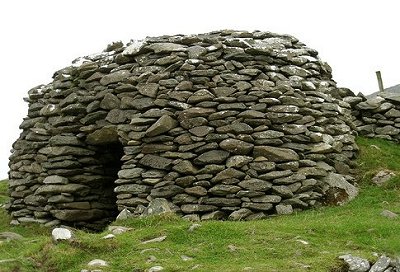
All over the island, monks found, carved and erected cross-pillars
for themselves.
click
to 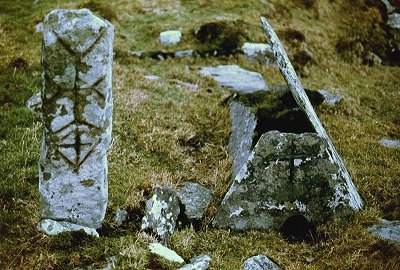 enlarge
enlarge
Pillar and Tomb-shrine with armhole for
touching the bones of St Buonia,
Killabuonia, county Kerry
Today
these are found in the remnants of old monastic settlements, often
with holy wells, with altars of loose stones called leachta,
and sometimes with rare surviving tomb-shrines (above)
and sacred (or magic) stones.
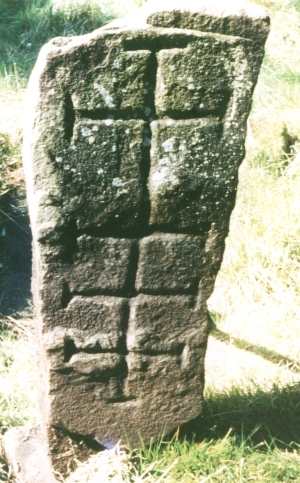
Carnacavill, county Down
These pillars can be quite small and crude - but they took considerable
effort to carve when the stone was not easily worked: flaky schists,
shales and granites are the most commonly-found in the old monastic
sites.

Saul, county Down
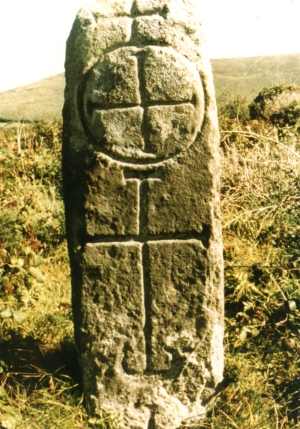
Lateevemore, county Kerry
But, even
in remote places, rather finely-carved pillars were put up.
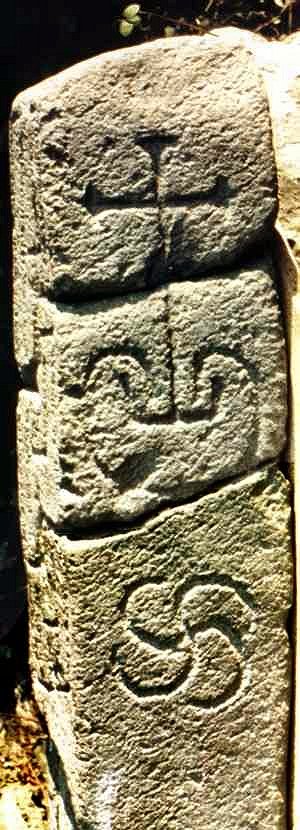
Cloon West, county Kerry
There are wonderful variations on the basic designs of the Latin
and Greek (equal-armed) crosses.

Currauly, county Kerry
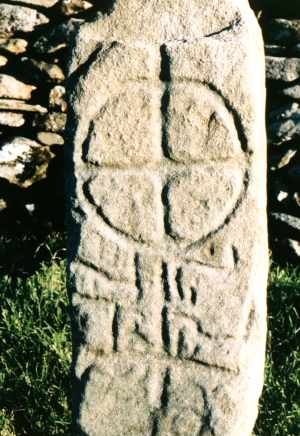
Gallerus, county Kerry
Non-geometric elements were introduced to the designs.
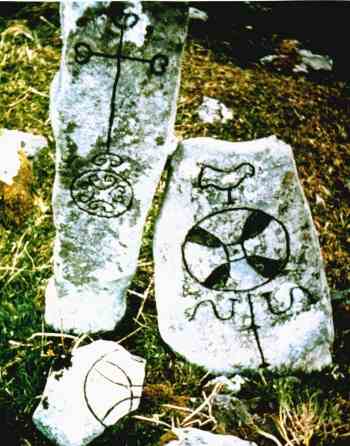
Caherlehillan, county Kerry:
a dove or peacock (symbol of immortality), and snakes or trumpets
(?)
click
for a photo taken 25 years later
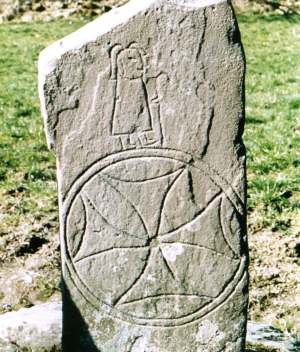
Ballyvourney, county Cork:
a 'wheel' enclosing a cross-pattée surmounted by
a monk
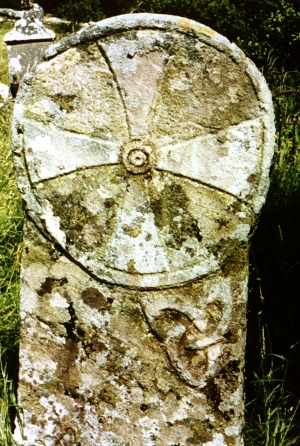
Killaghtee, county Donegal: a 'wheel' cross
above a triple knot of Brigid
probably representing the Trinity
Cross-designs often combined
in different ways and proportions rectlinear and curvilinear elements.
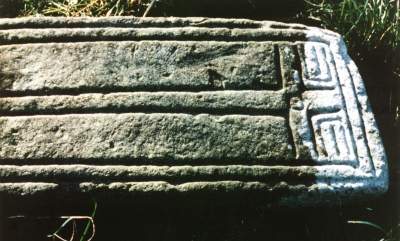
Castletown, county Meath
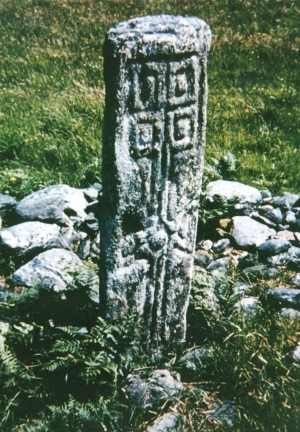
Glencolumcille, county Donegal
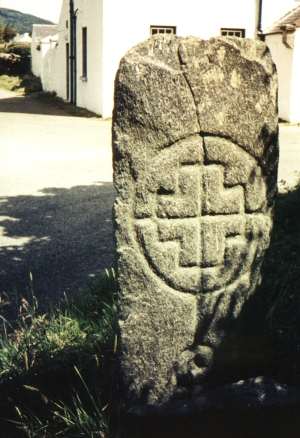
Glencolumcille, county Donegal
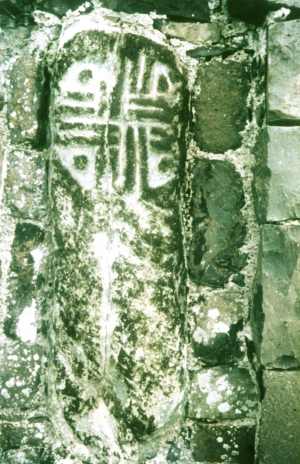
Templastragh, county Antrim
They could illustrate ecclesiastical "tools of the trade",
such as a crozier and a Tau or T-shaped cross.
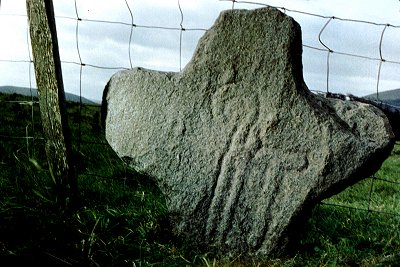
Broughanlea, county Antrim
They
could incorporate the Chi (X) Rho (P) symbol derived from the
first two letters of the Greek CRISTOS
('Christos' meaning 'anointed' - which of
course he never was: he was, famously, baptised!).
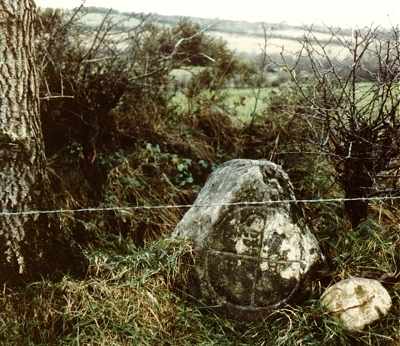
Drumaqueran, county Antrim: the Rho (P)
- a curclicue on the top arm of the cross - is the wrong way round
on one side, but the right way round on the other side of the
pillar.
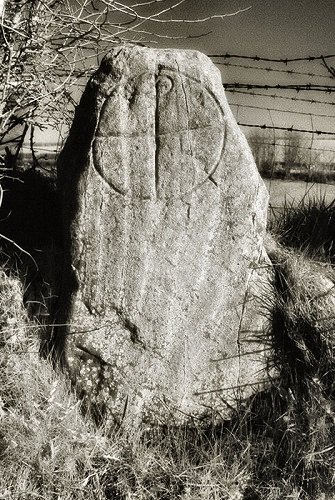
photo from Trinity College, Dublin.
The Alpha (A,a) and Omega (W,w)
were also popularly incorporated, as we have already seen.
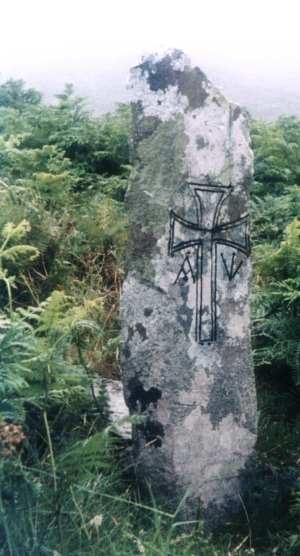
Kildreenagh, Loher, county
Kerry
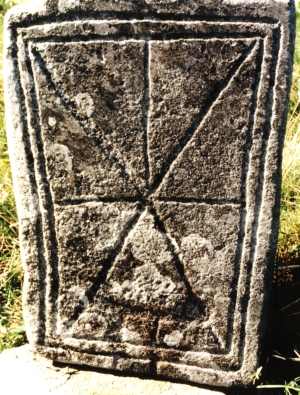
Toormoor or Toormour, county
Sligo: an entirely rectilinear design which ingeniously incorporates
an Alpha (A), in the bottom half, with an Omega (w
) in the top half of the slab.
Some strikingly
incorporate Neolithic passage-tomb designs to great effect - while
also obviously influenced by the Danish-Scandinavian motifs of
Northern English 'Hogback' Stones.
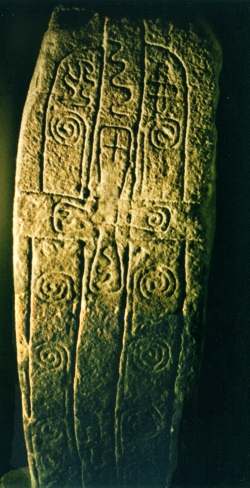
Kinnitty, county Offaly
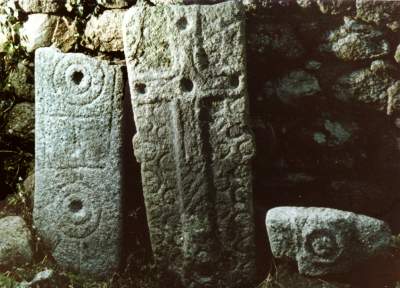
Killegar,
county Dublin
These at Killegar
are, of course, not pillars, but grave-stones in the Scandinavian
tradition.
Irish
grave-stones - or, more properly, cross-slabs - will be discussed
and illustrated on the next pages, together with the large crucifixion-slabs
which are primitive forms of the well-known sculptured or 'scripture'
crosses of the rich and richly-meadowed Midland monasteries.

![]()
